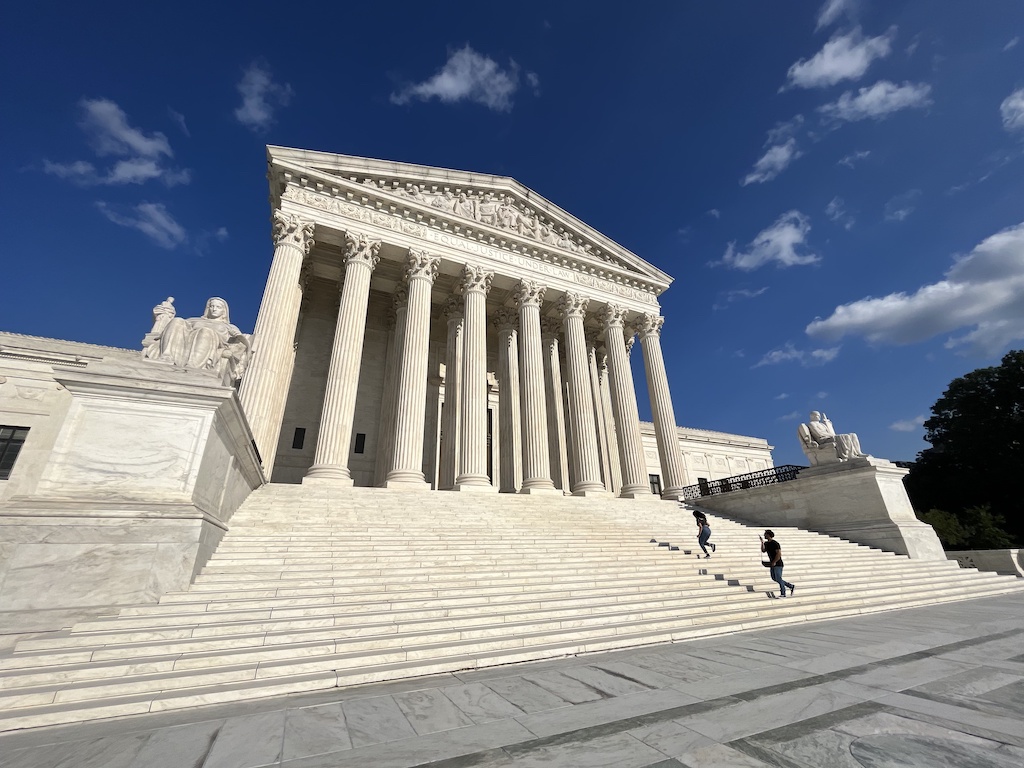WASHINGTON — The Supreme Court heard arguments Tuesday in a case over Alabama’s 2021 congressional redistricting plan. Although Black people make up 27% of Alabama’s population, the map includes just one majority-minority district, where Black voters constitute the majority.
Evan Milligan, executive director of the civic engagement group Alabama Forward, sued John Merrill, the Alabama Secretary of State, alongside other voting interest groups in three federal court cases.
Their argument hinges on Section 2 of the Voting Rights Act of 1965, which says that states must prevent racial minorities from having “less opportunity than other members of the electorate to participate in the political process and to elect representatives of their choice.” The plaintiffs presented 11 maps to prove that creating two majority-Black districts that complied with other traditional Alabama redistricting requirements was possible.
In January, a three judge panel ruled that Alabama’s new congressional maps likely did violate the Voting Rights Act and gave the state two weeks to create a new one. Alabama made an emergency appeal to the Supreme Court to stay the ruling.
In a 5-4 decision, the court agreed to let Alabama keep its proposed map until the case could be argued before the court. The three liberal justices were joined by Chief Justice John Roberts in dissent, saying that there was already precedent in place from a 1986 Supreme Court ruling.
In Thornburg v. Gingles, the court found that the North Carolina legislature’s redistricting plan violated Section 2 of the Voting Rights Act by grouping Black voters in such a way that it would be difficult if not impossible to elect their preferred candidates. And, before the Court heard the case, Congress clarified Section 2 to mean that plaintiffs only had to prove discriminatory effect - not discriminatory intent - for the Voting Rights Act to be violated.
Alabama’s Solicitor General Edmund Lacour made a varied and complicated set of arguments before the justices Tuesday, arguing both that the redistricting plan submitted by the plaintiffs did not meet the procedural standards set out by the 1986 ruling. He also contended that a map with more than one majority-minority district would be “racially gerrymandered,” allegedly violating the 14th Amendment.
Lacour seemed to suggest that such a map would disproportionately benefit Black people and harm white people.
“Single member districting is uniquely zero sum,” he said. “If you have a neutral plan and someone comes in and upsets it to racially gerrymander in favor of one racial group, necessarily you’re going to be harming some other group on account of race.”
The justices appeared skeptical of Alabama’s arguments, especially liberal Justices Elena Kagan and Ketanji Brown Jackson.
Conservative Justice Amy Coney Barrett also expressed confusion about Lacour’s arguments: “Mr. Lacour, I think I’m struggling in the same way that some others have about narrowing down exactly what your argument is. You know, I disagree with you and agree with Justice Kagan’s characterization of the intent point. Our precedent and the statute itself says that you don’t have to show discriminatory intent, so put that aside.”
Notably, Jackson argued that the Equal Protection Clause and of the 14th Amendment were adopted in a “race-conscious way.”
“I don’t think we can assume that just because race is taken into account that that necessarily creates an Equal Protection problem,” Jackson said. “‘(The country’s Framers and Founders) were in fact trying to ensure that people who had been discriminated against, the freedmen during the Reconstruction period, were actually brought equal to everyone else in society… That’s not a race-neutral or race-blind idea in terms of the remedy, and even more than that, I don’t think that the historical record establishes that the Founders believed that race neutrality or race blindness was required.”
Kagan suggested that previous rulings should have resolved this dispute without it needing to be brought to the Supreme Court saying, “What strikes me is that under our precedent this should be a slam dunk.”
This is the third major challenge to the Voting Rights Act to be argued before the Supreme Court since 2013. The previous two, Shelby County v. Holder and Brnovich v. Democratic National Committee, both resulted in significant constraints on the Voting Rights Act.
Kagan said Tuesday that the Voting Rights Act has not fared well at the court in recent years, “And you’re asking us essentially to cut back substantially on our 40 years and to make this, too, extremely difficult to prevail on. So what’s left?”

